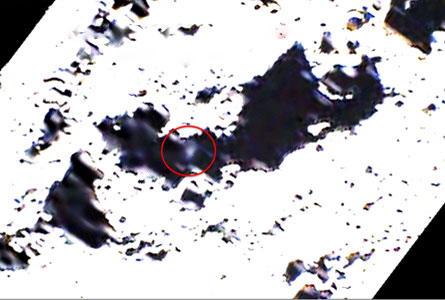The Centaur rocket that was deliberately crashed into one of the moon’s southern craters October 9 did in fact kick up a plume, even though the plume was not initially as large as hoped.

The relatively low velocity of the Centaur rocket generated a plume that was difficult to spot — in fact impossible to see by many ground-based telescopes — and smaller than had been predicted, suggests Randy Gladstone of the Southwest Research Institute in San Antonio.
Moments after the impact, as the rocket’s mother spacecraft LCROSS got closer and closer to the crash site of its empty Centaur rocket, which had plunged into a crater called Cabeus, the raw images taken by LCROSS showed nothing but darkness.
But enhanced composite images released October 16 do show a faint plume that was not apparent in the raw images.
The enhanced images show the heat flash from the impact, the plume and the creation of a new crater inside Cabeus before LCROSS plunged to its own death 4 minutes after the Centaur, said Anthony Colaprete, LCROSS principal investigator and project scientist at the NASA Ames Research Center in Mountain View, Calif.
The new LCROSS images indicate that the crater forged by the Centaur impact is 28 meters wide. Researchers are still analyzing data taken by the craft’s visible-light and ultraviolet spectrometer to identify the plume’s composition.
In the meantime, far-ultraviolet spectra taken by another craft, the Lunar Reconnaissance Orbiter, as it flew over the impact site shows no obvious signs of water. Instead, the spectra show signs of what may be iron and mercury, says Gladstone, a mission scientist.







